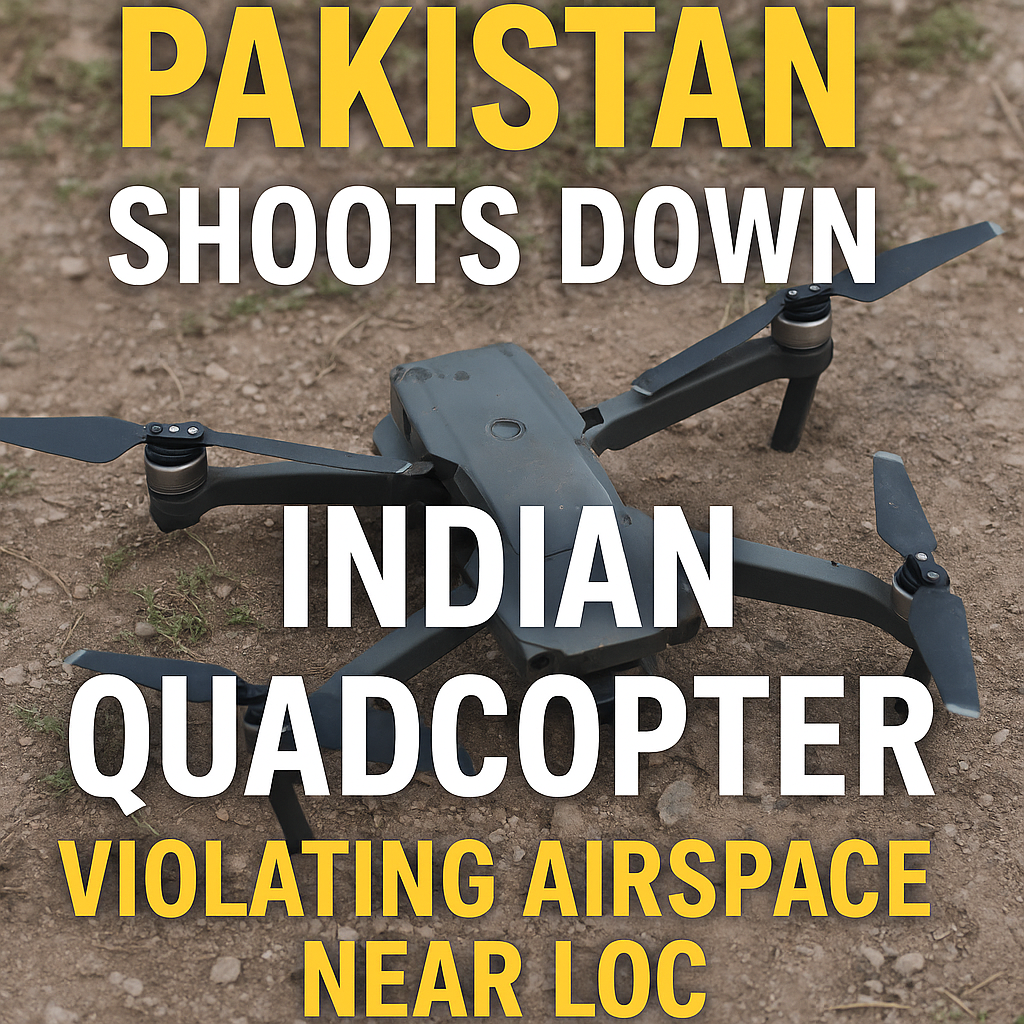Pakistan Shoots Down Indian Quadcopter Violating Airspace Near LoC
Pakistan Army Shoots Down Indian Quadcopter for Airspace Violation Near LoC
In a significant development along the volatile Line of Control (LoC), the Pakistan Army announced that it has shot down an Indian surveillance quadcopter that had allegedly violated Pakistani airspace. The incident took place near the LoC, further intensifying tensions between the two nuclear-armed neighbors.
Details of the Incident
According to a statement released by Inter-Services Public Relations (ISPR), the public relations wing of the Pakistan Armed Forces, the quadcopter intruded 150 meters into Pakistani airspace before being intercepted and brought down by troops stationed in the region. The military shared images of the downed quadcopter, which appeared to be a standard reconnaissance drone commonly used for border surveillance.
This is not the first such incident. Over the past few years, Pakistan has claimed to have downed several Indian quadcopters that crossed into its territory, accusing India of using them for espionage purposes. The Indian side has often remained tight-lipped or denied such incidents.
Strategic and Diplomatic Implications
Such violations, though involving relatively small unmanned vehicles, carry larger implications in the already tense security dynamic between India and Pakistan. The LoC, which divides Indian-administered and Pakistani-administered parts of Kashmir, is one of the most militarized zones in the world. Any breach of airspace in such areas is treated with utmost seriousness due to the risk of escalation.
The Pakistani military reiterated that any attempts to violate its territorial integrity would be met with a swift and proportionate response. The statement underscored Pakistan’s commitment to defending its sovereignty and keeping a watchful eye on its borders.
A Pattern of Provocations?
Analysts suggest that repeated drone incursions may reflect a growing reliance on unmanned systems by both countries for intelligence gathering in high-tension zones. While drones reduce the risk to human pilots, they also introduce new risks — including unintended escalation due to miscalculations or misinterpretations of intent.
India has not yet issued an official response regarding this latest incident. However, similar episodes in the past have led to diplomatic protests and tit-for-tat rhetoric between the two countries.
Conclusion
While a single quadcopter may seem insignificant on the surface, its presence in contested airspace is a stark reminder of the fragile peace in the region. As both nations continue to modernize their military capabilities, including the use of drones and AI-driven surveillance, mechanisms for de-escalation and open communication channels become even more crucial.
The international community will be watching closely to see how both sides navigate this latest flare-up — and whether it leads to further strain or paves the way for renewed dialogue.








Post Comment